Our Top 5 Favorite Historic Homes in Atlanta
Sundae is new in town, so we took an in-depth look at some of the historical and architectural influences that make Atlanta such a great and unique city to live in.
In addition to things like its diverse musical heritage, soul food, and Southern hospitality, Atlanta has a melting pot of different architectural styles. If you walk through any of Atlanta’s distinct neighborhoods, you’ll see homes built in Victorian, Tudor, Ranch, and Bungalow styles. You won’t find any traces of Antebellum architecture, however, because the majority of Atlanta burnt down during the fire of 1864. When the city was rebuilt, classical, modern, and post-modern architectural styles dominated the skyline.
As real estate enthusiasts, we examined some of the most famous historical buildings in the Atlanta area and picked a few to spotlight.
1. The Herndon Home
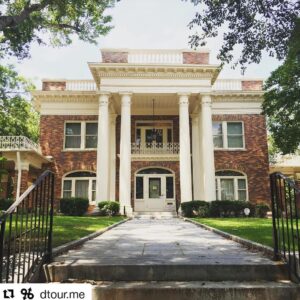
Image courtesy of preserveatl on Instagram
This home, named after its builders Alonzo and Adrienne Herndon, was built in 1910 and was recognized as a National Historic Landmark in 2000. Though he was born into slavery in 1858, Alonzo Herndon went on to found the Atlanta Life Insurance Company and become Atlanta’s first African American millionaire.
This Beaux-Arts mansion, located near downtown Atlanta, is a two-story home with 15 unique rooms. Herndon’s most dramatic feature may be its grand two-story entry portico supported by Corinthian columns. The house itself was built completely by an African American workforce and stands today as a testament to the hard work and talent of this foundational Atlanta community
2. The Wren’s Nest
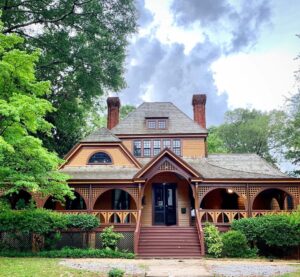
Image courtesy of archiveatlanta on Instagram
The Wren’s Nest was the home of Joel Chandler Harris, a progressive leader of the early 20th century. Originally a simple farmhouse, Harris purchased the property, along with the 5 acres it sits on in 1883. The original farmhouse was designed and built by George Muse, the founder of Muse Clothing which was a staple in Atlanta for nearly 100 years. Due to the success of Uncle Remus, Harris’s collection of American folktales, Harris was able to purchase the property from Muse who had outgrown the property.
Harris hired George Humphreys, an up-and-coming architect at the time in the Atlanta area, to renovate the property into the Victorian masterpiece you see today. Its neighborhood quickly became an epicenter of Victorian-style architecture which at the time came to be associated with post-Civil War brashness,, and optimismThe name “Wren’s Nest” came from Harris’s discovery of a family of wrens living in his mailbox in the Spring of 1895. After Harris’ death in 1908, American businessman and soon-to-be architect Andrew Carnegie decided to donate a large sum to establish the home as a museum. The structure was designated as a National Historic Landmark in 1962.
3. The Margaret-Mitchell House
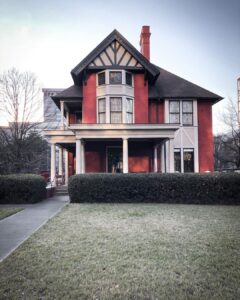
Image courtesy of chasingcharmatlanta on Instagram
You may be surprised to learn that this Tudor-style home, nicknamed “The Dump,” was owned by Margaret-Mitchell, American author who wrote the book-turned blockbuster hit Gone with the Wind.
Built in 1899 by local architect Cornelius Sheehan, The Margaret-Mitchell House is one of the oldest surviving structures in Midtown. Though it was originally intended as a single-family home, Mitchell broke the building up into ten-units, unit one being where she lived and completed much of her famous novel between 1925-1936.
The building continued as apartments until the late 1970s when it became abandoned. It was eventually restored in 1997 and opened to the public as the Mitchell House Museum.
4. Rhodes Hall
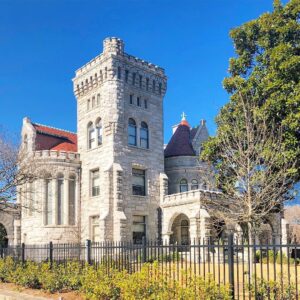
Image courtesy of housesofromega on Instagram
Rhodes Memorial Hall was built in 1904 by furniture magnate Amos Giles Rhodes, and was inspired by his extensive European travel and the many German castles located in the Rhineland region of Germany.
Rhodes Hall is widely considered to be architect Willis F. Denny II’s crowning achievement, who at only 27 was widely considered an up-and-coming talent.
Today, visitors can tour the extensive property and reserve it for private and corporate functions, and weddings. Some of you may remember that prior to becoming a museum in 1993, it was used as a Halloween haunted house!
5. The Swan House
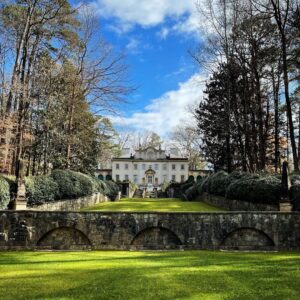
Image courtesy of cbrandoingram on Instagram
Drawing its name from the swan motifs decorating its rooms, The Swan House was built in 1928 by renowned architect Phillip Trammell Schutze. Edward and Emily Inman, the heirs to a vast cotton fortune, ordered the construction of the home. The Inmans used their money to help rebuild Atlanta in the years after the Civil War.
The interior of the home is just as elaborate as the exterior. Inside you will find a vestibule, a library, a dining room, four bedrooms, a sitting room, a basement, and an apartment in the attic. The exterior of the home is perfectly symmetrical and reflects the architect’s belief that English and Italian classical traditions could work together in harmony.
In 1966, the Atlanta Historical Society purchased the home along with most of the original furnishings and opened it to the public the following year.
Ready to Get Started?
Sell as-is. Pay zero fees to Sundae. Move on your time. No repairs, cleanings, or showings.